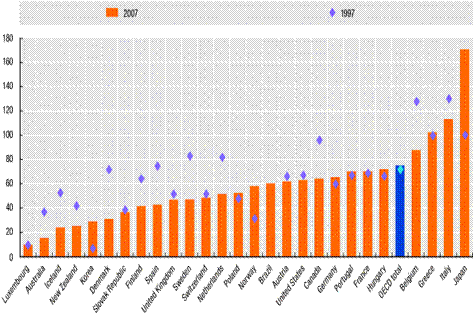Michael Winerip is a much better than average education reporter. He doesn't have a great grasp of the numbers or of the implications of the policies, limitations which have kept him from getting a jump on the story the way, say, This American Life did with the financial crisis, but he has kept up with it while most of his colleagues are still reporting discredited narratives from interested parties.
In 2009, Detroit public schools had the lowest scores ever recorded in the 21-year history of the national math proficiency test.
The district had a budget deficit of $200 million.
About 8,000 students were leaving Detroit schools each year.
Political leaders had to do something, so they rounded up the usual whipping boys:
Wasteful bureaucrats. In 2009, the governor appointed an emergency financial manager, Robert Bobb, a former president of the Washington school board, to run the Detroit district. Mr. Bobb is known nationally for his work in school finance, and recruiting him took a big salary, $425,000 a year. He has spent millions more on financial consultants to clean up the fiscal mess left by previous superintendents.
[A large number of people are acquiring a great deal of money and power through the reform movement. This doesn't mean that these people don't have good intentions or that they are not worth the money they're being paid but it does mean that this group, which includes high profile figures like Joel Klein and Michele Rhee, has a vested interest in these policies. It also means that when Michele Rhee brags about being a counterbalance to the special interests, she's not being entirely honest.]
Greedy unions. Though Detroit teachers make considerably less than nearby suburban teachers (a $73,700 maximum versus $97,700 in Troy), Mr. Bobb pressed for concessions. He got teachers to defer $5,000 a year in pay and contribute more for their health insurance. Last week, the Republican-controlled Legislature approved a bill to give emergency managers power to void public workers’ contracts. If signed by the governor, Mr. Bobb could terminate the Detroit teachers’ union contract.
Traditional public schools full of incompetent veteran teachers. Michigan was one of the first states to embrace charter schools, 15 years ago. Currently there are as many Detroit children in charters — 71,000 — as in district schools. Now there is talk of converting the entire Detroit district (which is 95 percent African-American) to charters. Supporters say this could generate significant savings, since charters are typically nonunion and can hire young teachers, pay them less and give them no pensions.
[Before we go on, this would seem to be an almost perfect test of the large-scale charter school model (as compared to the more limited role I've advocated). Charter schools have been put forward as the solution for this very kind of troubled urban district.]
So now, two years later, how are the so-called reforms coming along?
Not great.
Since Mr. Bobb arrived, the $200 million deficit has risen to $327 million. While he has made substantial cuts to save money — including $16 million by firing hundreds of administrators [Of course, he's spent millions making those cuts] — any gains have been overshadowed by the exodus of the 8,000 students a year. For each student who departs, $7,300 in state money gets subtracted from the Detroit budget — an annual loss of $58.4 million.
[Economic conditions and demographic shifts still trump any educational reform proposed so far. People need to remember this.]
Nor have charters been the answer. Charter school students score about the same on state tests as Detroit district students, even though charters have fewer special education students (8 percent versus 17 percent in the district) and fewer poor children (65 percent get subsidized lunches versus 82 percent at district schools). It’s hard to know whether children are better off under these “reforms” or they’re just being moved around more.
[As mentioned before, there are a number of possible biasing effects (peer, placebo, Hawthorne, selective attrition, etc.) that may be inflating the charter's scores. In other words, they are not outperforming the public schools and they may be doing much worse.]
Steve Wasko, public relations director for Mr. Bobb and the Detroit schools, did not respond to a dozen voice mails and e-mails seeking comment. Those who know Mr. Wasko say he cares about Detroit and is sick of the national media portraying the city as hopeless.
[You have a public relations director who can't work a talk with the New York Times into his schedule. This alone raises questions about the Bobb administration. It also suggests some other options for cost cutting (who do you think makes more, a starting teacher or a public relations director?)]
...
Last spring, Mr. Bobb had planned to close 50 schools with dwindling enrollment. But his list was reduced to 30 after several public meetings at which parents and staff members pleaded their school’s case before the all-powerful Mr. Bobb.
In June, Mr. Bobb held a news conference at Carstens Elementary — one of the schools spared — to announce the 30 closings.
One reason Carstens survived was an article in The Detroit Free Press last March headlined “Carstens Elementary on DPS closing list is a beacon of hope.”
The school, surrounded by vacant lots and abandoned houses, serves some of the city’s poorest children. Thieves who broke into the school last year escaped by disappearing into what the police call “the woods” — the blocks and blocks of vacant houses.
Yet Carstens students perform well on state tests, repeatedly meeting the federal standard for adequate yearly progress.
[As seen before, good teachers and schools often end up bearing the brunt of our current crop of reforms.]
“We try to fill in the holes in our children’s lives,” said Rebecca Kelly-Gavrilovich, a Carstens teacher with 25 years’ experience. Students get free breakfast, lunch and — if they attend the after-school program — dinner.
To have more money for instruction, teachers sit with students at lunch, saving the school from having to hire lunchroom aides. Teachers hold jacket and shoe drives for children who have no winter coats and come to school in slippers. At Thanksgiving every child goes home with a frozen turkey donated by a local businessman. Twice a year a bus carrying a portable dentist’s office arrives, and a clinic is set up at the school so children can get their teeth checked.
Despite all this, teachers worry that Carstens’s appearance on Mr. Bobb’s closing list — even though it was brief — means the end is near. Anticipating the worst, several parents have taken their children out of Carstens, enrolling them elsewhere, including at charters and suburban schools.
Carstens’s enrollment is half of what it was a few years ago. Every hallway has empty classrooms, giving the school a desolate feeling.
Mr. Bobb has set off a vicious cycle undermining even good schools. The more schools he closes to save money, the more parents grow discouraged and pull their children out. The fewer the children, the less the state aid, so Mr. Bobb closes more schools.
[This is a pattern we're seen before. Check Ravitch for specifics.]
Carstens has also been harmed by poor personnel decisions made by the district. Last year, 1,200 teachers took the retirement buyout, and Mr. Bobb laid off 2,000 others in the spring. Then in the fall, he realized he needed to hire the 2,000 back, and chaos ensued.
[Also something we've been warning about.]
At Carstens, a kindergarten class of 30 had no teacher until October; teachers at the school took turns supervising the class. “How do you think parents feel when there’s a different teacher every day?” said Mike Fesik, the current teacher.
It’s hard to understand why any teacher who could leave Detroit stays, but they do. Kim Kyff, with 22 years’ experience, is one of the lead teachers at Palmer Park, the elementary and middle school that opened last fall. In 2007 she was the Michigan teacher of the year. She has had offers from suburban schools, but stays because she believes that in Detroit, she has a better shot at being a beacon of hope.
[I should say more but it's late and I'm already depressed as hell. It's times like these when I have trouble not believing that, not only do we not care about children, we actually go out of our way to screw over those who do care. (yes, that's a lot of 'not's but given the hour what do you expect?)]


